




| Two-tubercled Orb-web Spider (Gibbaranea bituberculata (Walckenaer, 1802)) |





|
|
Scientific name: Gibbaranea bituberculata (Walckenaer, 1802) Common name: Two-tubercled Orb-web Spider French name: Épeire dromadaire Order: Araneae Family: Araneidae Size: Males: 6 to 8 mm; Females: 8 to 10 mm. Biotope: Bushes, hedgerows and low growing plants. Web: Orb web always located at a very low height, not higher than one metre from the ground. It is often inclined and even sometimes horizontal. It has 20 to 34 radii. You can find the Two-tubercled Orb-web Spider hanging under the web or hidden in the vicinity connected by an alert silk thread. Observation period: Adults are observed from April to June. Geographic area: Southern and central Europe. Palaearctic region. |
The cephalothorax is dark brown. The front of the abdomen shows two laterally-pointing tubercles. The fore part of the abdomen is often darker with some pale markings often drawing the shape of an arrow pointing forward. The hind part shows a toothed folium which tappers backwards. This spider is variable in colour from whitish to dark brown. Gibbaranea gibbosa, which is a slightly smaller size, is greenish. The Two-tubercled Orb-web Spider never shows any green colour. The tubercles of Gibbaranea gibbosa are rather pointing upwards. You can recognize female Gibbaranea omoeda , which is a slightly larger size, by its prominent central eyes which are located on a small hump (not very easy to see). This rarer species is found in mountains and spins its web in coniferous forest on the top of trees. You can recognize Araneus angulatus, which is a larger size and active during the night, by the saw tooth pattern of its folium with regular triangle shapes. The Two-tubercled Orb-web Spider's folium rather shows small points. |
| [To know more about the Two-tubercled Orb-web Spider] [Next picture] [Top] |
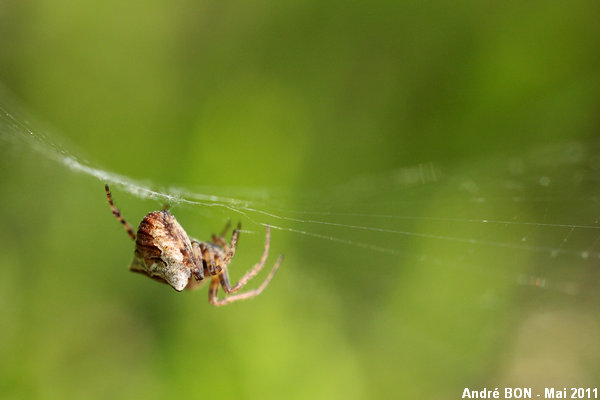
|
Here is one Two-tubercled Orb-web Spider hanging under its almost horizontal web located about 40 cm above the ground. |
| [To know more about the Two-tubercled Orb-web Spider] [Next picture] [Previous picture] [Top] |
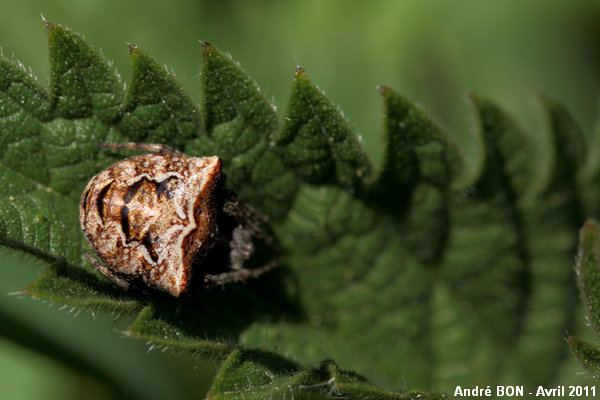
|
Seeing the folium and the lack of green colour we have here Gibbaranea bituberculata or Gibbaranea omoeda. The region and the habitat among low growing shrubs and nettle beds enable us to decide for Gibbaranea bituberculata. |
| [To know more about the Two-tubercled Orb-web Spider] [Next picture] [Previous picture] [Top] |
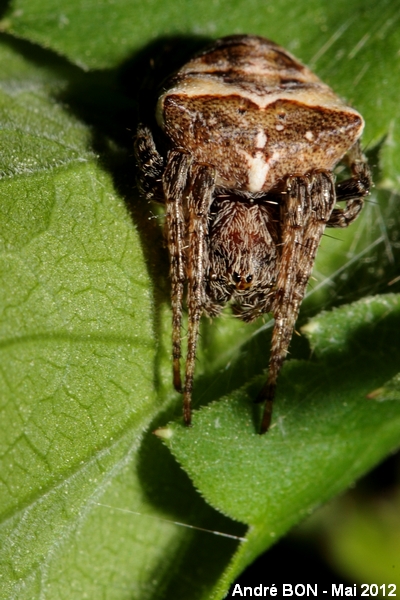
|
I thought I could decide between Gibbaranea bituberculata and Gibbaranea omoeda with this front side picture and a good view on the eyes. In fact a side view is required to see the small bump under the central eyes. I have also listed this specimen as Gibbaranea bituberculata because of the region and because of its presence on low growing plants. |
| [To know more about the Two-tubercled Orb-web Spider] [Next picture] [Previous picture] [Top] |
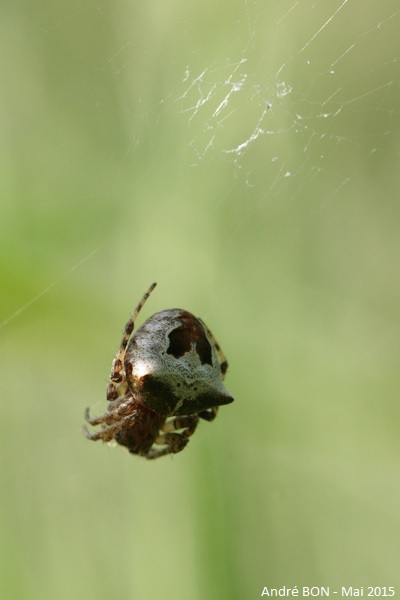
|
Here is one spider with dark brown markings on the abdomen. |
| [To know more about the Two-tubercled Orb-web Spider] [Previous picture] [Top] |
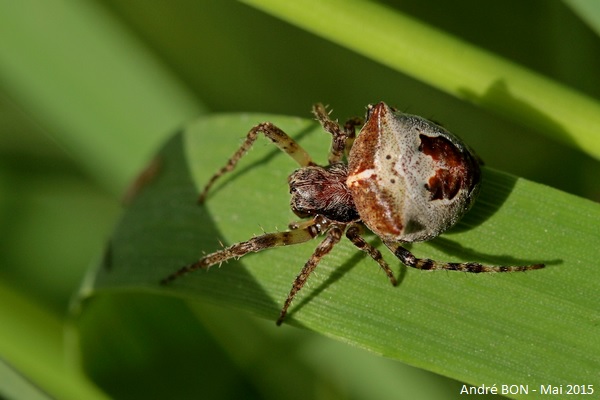
|
The white makings on the front part of the abdomen draw the shape of an arrow that you can clearly see on this picture. |